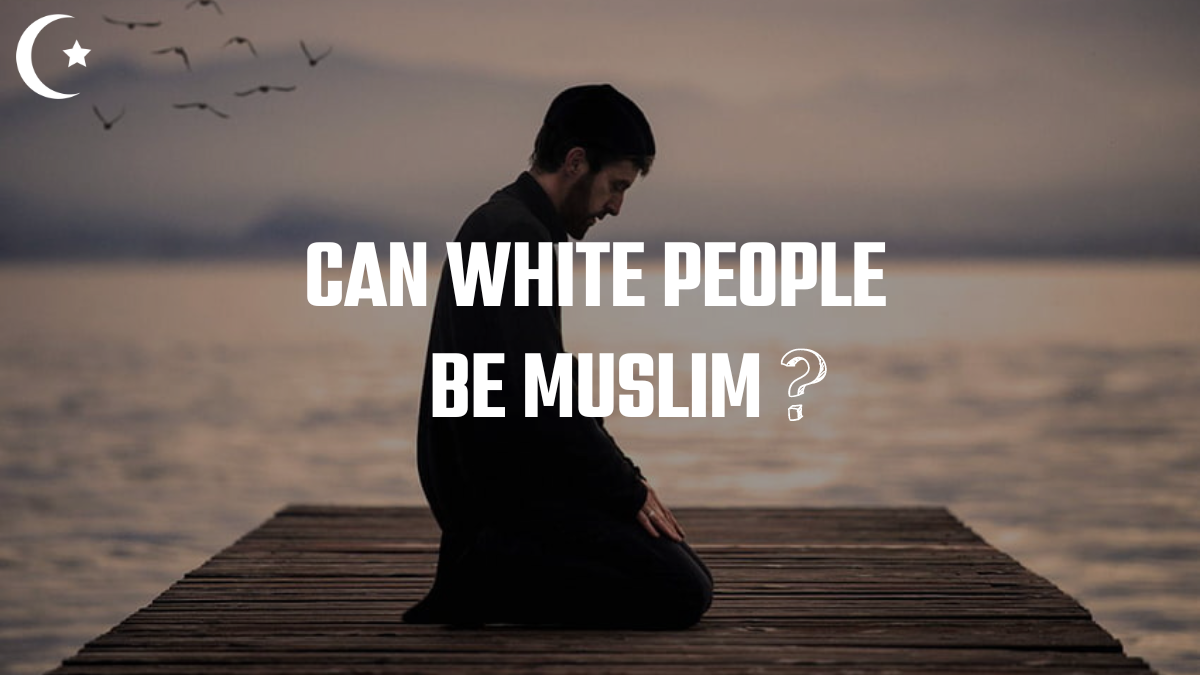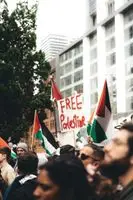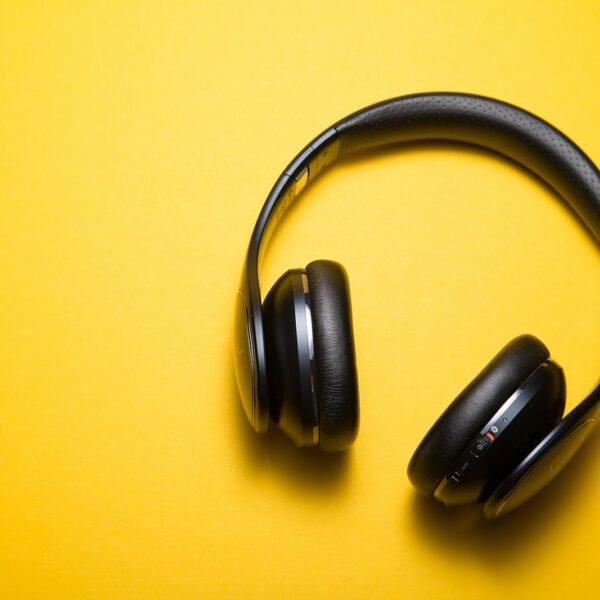Have you ever wondered if the Islamic faith welcomes everyone, no matter their race? The question “Can white people be Muslim?” shows us how some people misunderstand Islam. It’s important to look closer at how Islam truly sees everyone.
Islam is a faith that welcomes people from all backgrounds. It teaches that being spiritual is more important than race or ethnicity. Throughout history, Islam has brought people together, focusing on fairness and justice. It’s all about being good to others, not about who you are.
Looking into Islamic faith inclusion, we see how diverse the Muslim community is. In America, about 700,000 Black American Muslims show how faith crosses all colors. Meanwhile, Southeast Asia, especially Indonesia, has the most Muslims, showing Islam’s worldwide presence.
As a white-passing Muslim, the author shares their unique experiences. They talk about how some people don’t understand or see these identities correctly. This shows how race and faith mix in Islam.
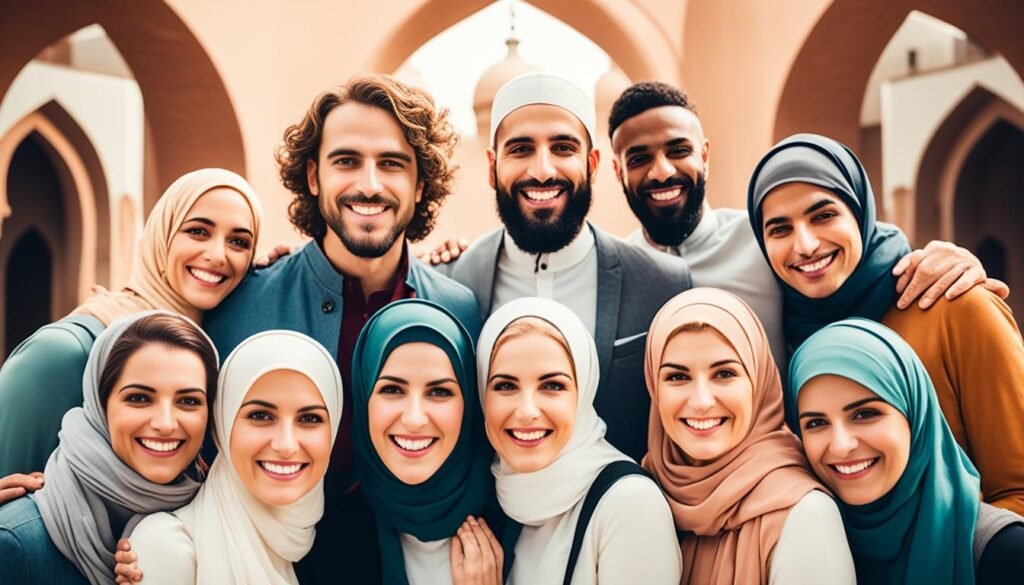
The Inclusive Nature of Islam
Islam is known for its inclusivity in faith and welcoming nature to people from all backgrounds. It believes everyone, no matter their race or ethnicity, can follow the Quran’s teachings. This belief is based on Islamic principles that say being good is what matters most, not where you come from.
Islamic teachings say all believers are equal. God made us different for a reason. This idea helps us value the variety of experiences and views in the Muslim community. It fights the idea that Islam is only for Arabs, showing how diverse it really is.
As we think more about race and religion, it’s key to accept inclusivity in faith. Looking into race theories shows how new identities form and how Muslims are seen in society. Scholars point out how past discrimination affects how people see Islam in the US and Europe. This shows how faith and identity can change and affect how we see Islamic teachings and our search for acceptance.
Understanding Race and Religion in America
Race and religion in America deeply affect how people see American Muslims. Many American Muslims are white, especially those from the Middle East or North Africa. Since 1978, the government has seen MENA people as racially White. This makes talking about race and Islam complex.
People’s views on Muslims often mirror wider social biases. Studies reveal that Americans might prefer Syrian refugees who are women, speak English, and are Christian. This shows the hurdles Muslims face in a mostly Christian country, where their religion can lead to bias.
Now, there are about 3.45 million Muslims in the U.S., with 41% being white. Half of Muslim adults in the U.S. are married, often to other Muslims. This shows a diverse racial background within the faith, challenging the idea that Muslims are mostly non-white. Looking at race, religion, and belonging helps reduce discrimination against American Muslims.
Can White People Be Muslim
The history of Muslims in America goes back centuries, showing that Islam isn’t tied to any race. White American Muslims have always been part of this story, proving faith knows no racial lines. They came to America in the 17th century with enslaved Africans, bringing Islam with them. Over time, American Islam became a mix of many cultures and identities.
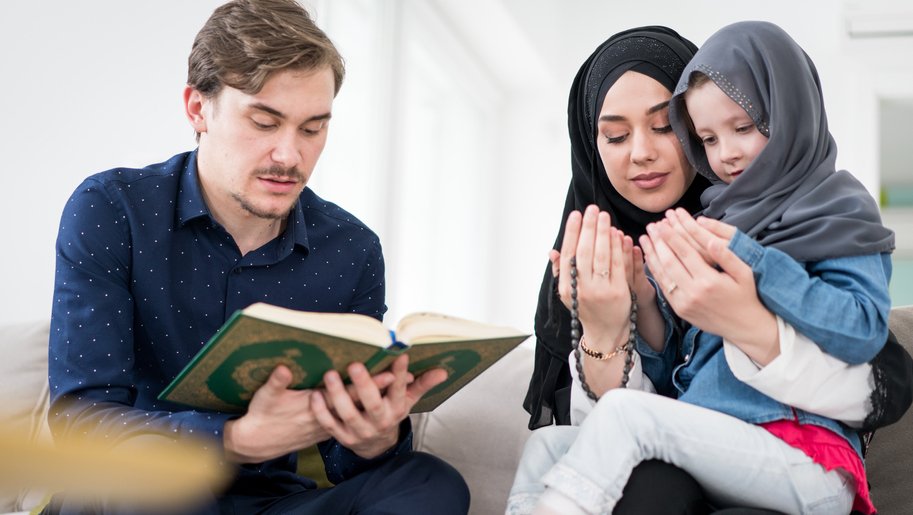
Historical Context of Muslims in America
The story of Muslims in America is complex, involving immigration, conversion, and building communities. People from different backgrounds, including Europeans, found Islam and made their own place in it. This shows Islam isn’t limited by race or ethnicity. White converts to Islam make the religious scene in America even more diverse, helping everyone understand the community better.
Statistical Insights on White Muslims
Recent studies highlight the big role white American Muslims play in the country’s Islamic scene. About 40% of American Muslims are white, including those from the Middle East. This fact shows how diverse the Muslim community is. The mix of race and faith affects white Muslims’ lives, showing both common and unique challenges in being American and Muslim.
Islam’s Global Diversity
The Muslim faith is rich with different beliefs and practices. It shows the wide range of cultural expressions in Islam across the world. People from many backgrounds make up the global Muslim communities. They all add to the diversity in belief.
This diversity shows a faith that is not just one thing. It’s a mix of many traditions and teachings. All these share common core principles.
Variety Among Muslim Communities
Muslim communities around the world are very diverse. They have different customs, languages, and ways of understanding Islam. From Indonesia to Nigeria, people practice their faith in unique ways.
This diversity makes understanding Islam complex and interesting. It lets believers keep their heritage while following Islamic principles. Each community has its own way of showing their faith through rituals, art, and food.
Intersection of Culture and Faith
The mix of culture and faith in Islam is important. It shows the value of celebrating who we are. Many converts to Islam find they see things differently from others.
This leads to a deeper understanding and respect for the many ways Islam is practiced. By exploring different traditions, we learn more about each other. This helps break down wrong ideas about race and belief.
Dispelling Myths: Islam is Not Just for Arabs
Many think Islam is only for Arabs, but this is not true. In fact, less than 15 percent of Muslims are Arabs. Most Muslims live in countries like Indonesia, Malaysia, India, and Pakistan. This shows that Islam is diverse and reaches all over the world.
The Universal Message of Islam
Islam has a message for all people, as shown in the Quran and by the Prophet Muhammad (peace be upon him). It teaches us to treat everyone equally, no matter their race or ethnicity. This goes against the idea that Islam is just for Arabs.
The Quran also talks about understanding, compassion, and tolerance. It tells followers to be kind and respectful to people of other faiths.
Islam has always been adaptable and diverse. Muslims have a long history of trading and sharing cultures with different societies. This shows how Islam can fit into many different lives and cultures today.
Experiences of White American Converts to Islam
White American converts to Islam face a unique journey. They blend their identity with their faith in a community mostly made up of other races. Their stories highlight the challenges of finding acceptance and balancing their personal identity with the community’s expectations.
Racial Identity and Conversion Challenges
When white Americans convert to Islam, they notice how race affects their new faith. They struggle to fit their faith with how society sees race. They become more aware of their race, especially in a diverse Muslim community.
This awareness can lead to confusion about their racial identity. The principles of Islam teach equality, but their own race makes things complicated. They find themselves caught between their faith and their race.
Community Acceptance Dynamics
Being accepted in the Muslim community is hard for white American converts. Long-standing racial issues make it tough for them to fit in. Research shows that some Muslims may not fully accept them due to racial biases.
This situation makes converts question what it means to belong in a diverse religious group. They want to be accepted for who they are but face resistance because of their race. They must navigate this complex situation to find their place in the community.
Quranic Teachings on Equality
The Quran teaches us that all people are equal, no matter their race or social status. It says in chapter 49, verse 13, “The noblest of you in God’s sight is the one who is most righteous.” This shows us that being close to Allah is based on being righteous, not on who your parents are or where you stand in society.
Scriptural Evidence of Inclusivity
Before Islam, Arab society was divided by tribes. But Islam changed that. It welcomed people who were once left out, like slaves and those from smaller tribes. This made everyone feel they belonged. The story of Bilal, a freed slave who became a key figure in Islam, shows how the Quran’s teachings changed lives.
The Role of Righteousness Over Race
Today, American Muslims are fighting against racism, supporting groups like Black Lives Matter. The Quran says we should judge people by how righteous they are, not by their wealth or social status. During prayers and the pilgrimage, everyone wears the same clothes, showing we’re all equal in God’s eyes. This message helps fight against prejudice and can change lives, like it did with Malcolm X.
The Quran keeps teaching us about fairness and respect for all people. It shows us that we’re all equal and should be treated as such.
You may also be interested in:
Contemporary Perspectives on Race in Islam
Modern discussions about race in Islam show a complex mix of identity, faith, and how people see us. In the United States, Muslims from different backgrounds and origins make up a diverse community. Yet, they often face scrutiny from broader racial views.
White Americans, mostly enjoying privileges because of their ethnicity, sometimes push non-White Muslims to the side. This includes people from the Middle East and North Africa (MENA). They see Whiteness as a key to power.
Being Muslim can make it hard for people to get the same benefits as White folks. It can hide their ethnic or regional roots, making them feel like outsiders. Studies show that even if they look like their Christian friends, Muslims are often seen as not White.
Looking at Islam’s history with race shows we need ongoing talks about race and faith. Recent talks show that religious beliefs affect how people see race. Being Muslim makes it less likely someone will be seen as White. So, we must keep talking about race to better understand and include all Muslims in our view.
The Importance of Education and Outreach
Education is key to understanding Islam, especially for communities with wrong ideas. Outreach programs help start open talks to break down walls. This leads to more people knowing and accepting Islam. By teaching about Islam, we can change how people see it, showing its welcoming nature and common values.
Breaking Down Barriers to Understanding
Outreach programs teach people about Islam to fight wrong ideas from not knowing enough. They bring communities together with workshops, talks, and joint events. This encourages people to talk and share, helping to clear up misunderstandings about Islam.
Schools are vital in telling the story of Islam. By adding diverse content, they fight against bad images of Muslims. Curricula that show the rich Muslim world help students understand and feel for others. A caring school setting helps build acceptance and fights against fear and bias.
Personal Narratives: White Muslims Speak Out
Many white Muslims share deep experiences on their journey to Islam. Despite the hurdles, their stories show a rich mix of faith and identity. Each story tells how they found Islam, influenced by their culture and search for spiritual meaning.
Reports say white Americans make up a small but key part of the US Muslim community. Surveys show that about 22% of those converting to Islam are white. Even though they’re just 1.6% of all American Muslims, their stories are crucial to understanding their experiences.
Conversion often means dealing with how others see them. People talk about how their choice challenges wrong ideas about race and faith. Their stories help us see what it’s like to be a Muslim in a diverse world, showing both the support and the challenges they face.
The stories of white Muslims show the strength of those embracing a faith often linked to race. Their paths remind us of Islam’s inclusive nature and its ability to bridge cultural gaps. Through these stories, white Muslims work to increase understanding and acceptance, adding to the conversation about faith in America.
Future of Islam in a Diverse America
The future of Islam in America looks promising, with chances for growth in a diverse society. The number of Muslims is expected to rise to 8.1 million by 2050. This growth means we need to work on understanding each other better.
This change will bring more diverse views to the Muslim community. It will help create a unified identity that goes beyond race and culture.
But, there are still big challenges. Muslims face hate crimes more often than before 9/11. This not only threatens their safety but also harms their health. It’s important for Muslims to work together and talk openly to fight these issues.
By valuing diversity, American Muslims can build a strong community. This approach will help them stand up to challenges. Through education and action, Islam in America can become a symbol of hope and acceptance in a changing society.
FAQ
Can White People Be Muslim?
How does the Quran address racial diversity?
What is the racial demographics of American Muslims?
What historical context supports the presence of white Muslims in America?
How do global Muslim communities represent diversity?
What misconceptions exist about Islam being only for Arabs?
What challenges do white American converts to Islam face?
What does the Quran say about equality among believers?
How do contemporary issues of race manifest within the Muslim community?
Why is education and outreach important in the context of Islam?
What personal experiences do white Muslims share about their faith journeys?
What does the future hold for Islam in a culturally diverse America?
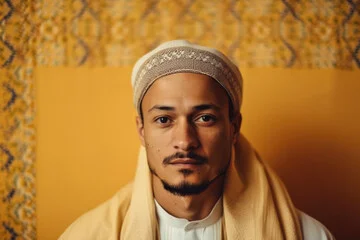
Embracing Faith, One Insight at a Time!
The teachings of the Quran have always guided my path. With a deep passion for Islamic knowledge, I strive to blend the wisdom of tradition with the relevance of today, making the timeless messages of Islam accessible and meaningful for everyone.
Muslim Culture Hub is my platform to share historical insights and thought-provoking articles, exploring both well-known and lesser-discussed aspects of Islamic culture and beliefs. My mission is to create an inclusive online space where everyone can learn, strengthen their faith, and connect with the profound message of Islam.
Join the journey!
May peace be upon you.

